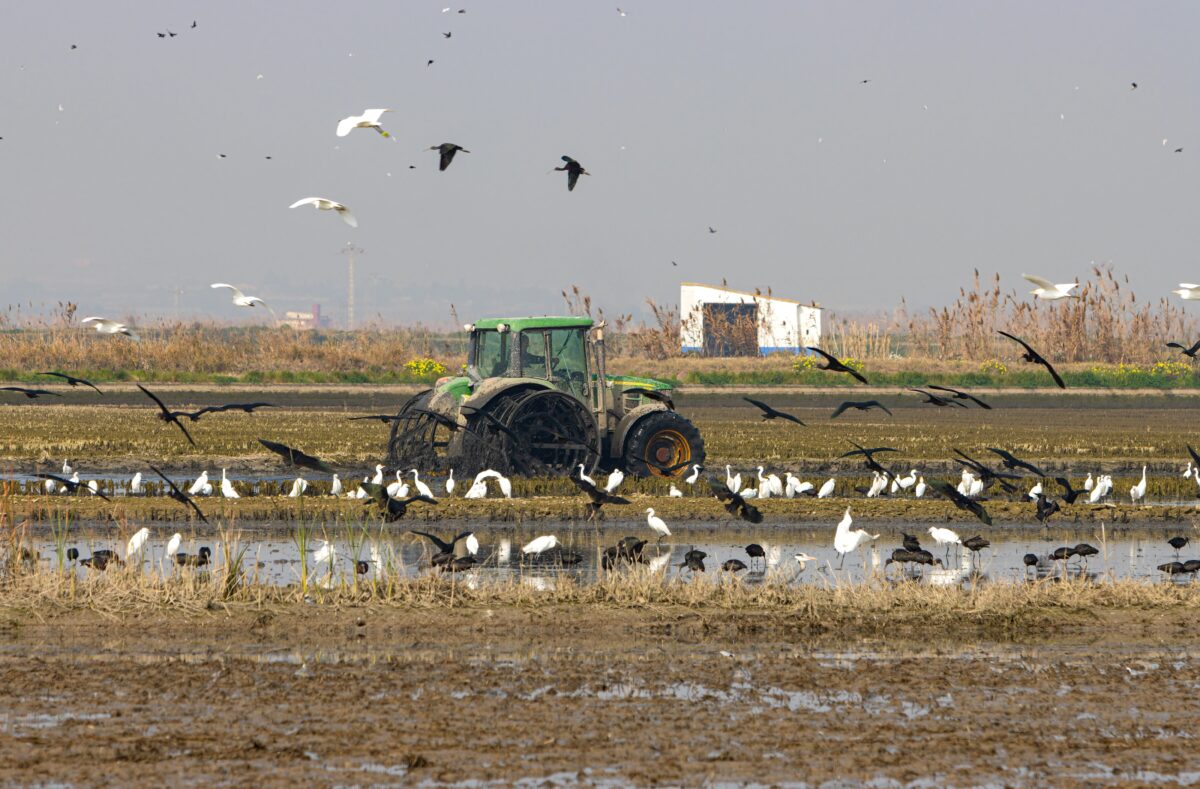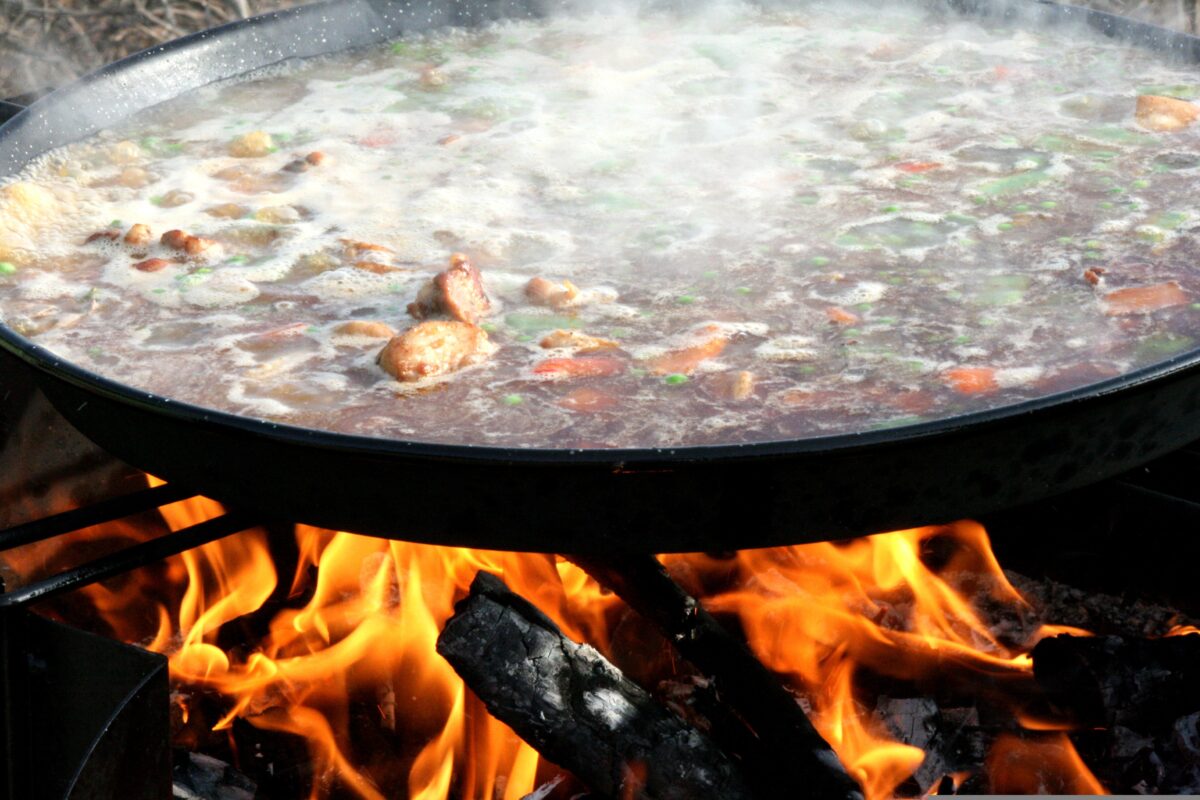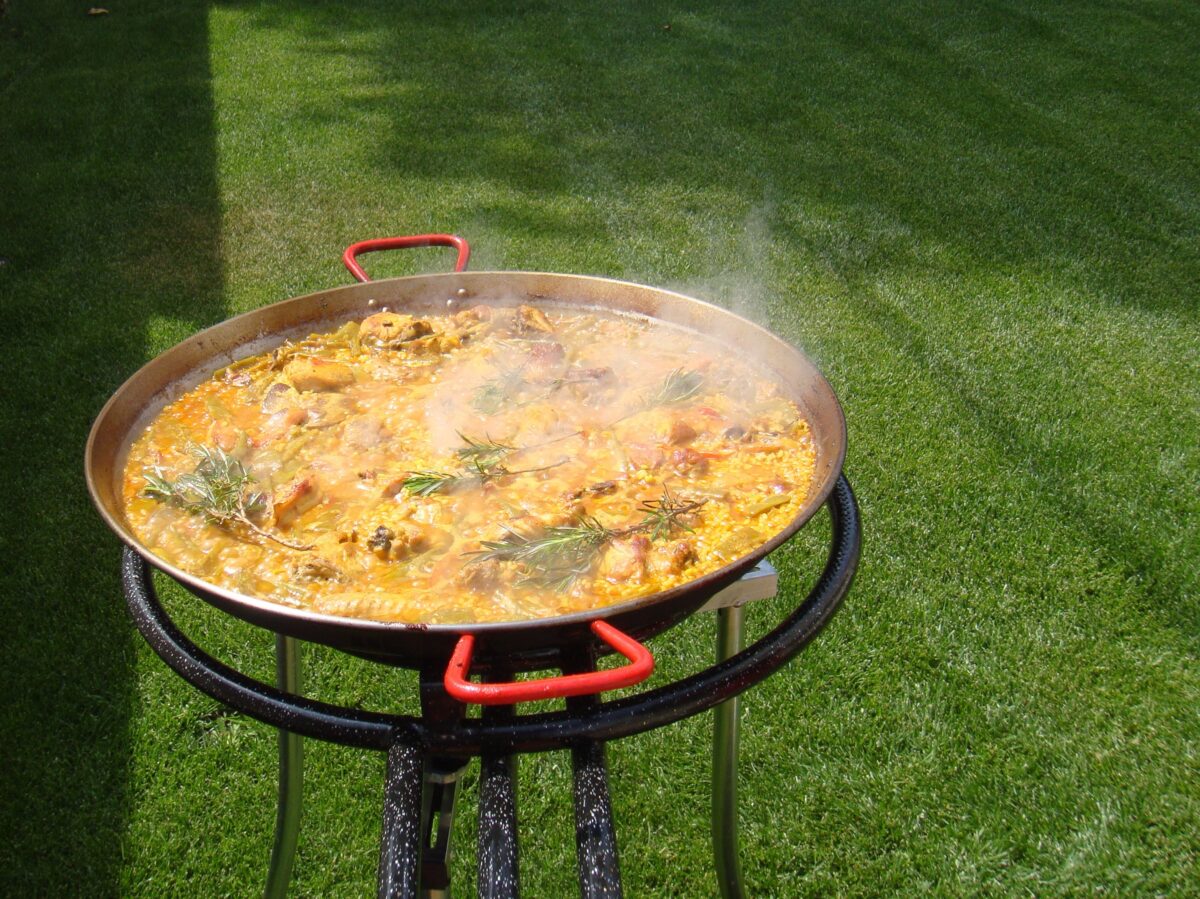When issues related to Paella Valenciana are discussed, it is often done in the context of international tourism as a tourist attraction, whether in Spain or abroad. Still little is discussed about paella as an identity and cohesive symbol. In fact, paella is not only an ancient staple of Valencian and Spanish gastronomy: its making process and the art of preparing and enjoying it make it an authentic social and cultural glue that creates belonging and identity. The history, tradition, customs, and techniques handed down from generation to generation, as well as the role played by this dish in the cultural spaces, festivals, and celebrations of the Valencian Community, have led paella to be the symbol of the “art of uniting and sharing.” This has been recognized by the Consell de la Comunidad Valenciana 2021. In addition, it is worth noting how paella, over time, has ended up influencing part of the Valencian landscape and ecosystem through the cultivation and production of the foods from which it is made. For all these reasons, paella is part of the Mediterranean Diet and is included in the Representative List of the Intangible Cultural Heritage of Humanity (UNESCO).
The main ingredient of this dish is rice, which according to tradition must be added to the broth crosswise to distribute it properly in a very thin layer that should not be stirred to thicken the starch. The ingredients must include ten main ingredients such as extra virgin olive oil, salt, water, tomato, garlic, paprika, black pepper, beans, saffron, and chicken, as well as eight other ingredients that vary depending on the area or region of the Valencian community. These secondary ingredients include: rabbit, vaquetas (snails), garrofón (broad beans), ferradura (flat green beans), ñora (a variety of pepper), artichokes, squid, and pork ribs, as Wikipaella Association president Guillermo Navarro Tallada points out. Also of great importance is fire, which in the Valencian lands is typically orange wood (García 2011), ideal not only for its characteristic aroma but also for being an easy-to-handle firewood that does not cause much smoke.
The availability, cultivation, and preparation of these foods could is threatened by climate change, which poses a complex environmental challenge that makes Spain particularly vulnerable, both because of its geographical location and its socioeconomic characteristics. The risks identified by traditional operators, the local community (involving political authorities, farmers, the hotel, restaurant, and tourism sectors, and the Valencian population), and industry researchers relate to impacts in wheat, rice, and corn crops due to increased air and water temperatures (heat and water stress); shortening of the growing season and variability of yields to increased pests and diseases; to water availability; from salinization of water and soil, but more generally the significant increase in temperatures that is occurring in the Mediterranean region, along with the irregularity of rainfall, leading to long periods of drought alternating with other episodes of torrential rains at “inappropriate” times of the year.
Therefore, it became necessary to inscribe this vulnerability in a regulatory framework capable of studying measures and policies to mitigate the risks that are affecting the primary sector in the first instance (with particular reference to the cultivation of garrofón and rice grown in the Albufera) with consequent repercussions on the rest of the sectors as well, including the life and culture of the inhabitants of the Valencian area (and beyond). In fact, the entire society of the area is deeply and materially linked to the tradition of this dish: paella competitions (such as the International Paella Competition of Sueca), family events, festivals (the El Tastarròs festival), celebrations (such as World Paella Day or University Paella) and popular festivities, recreational activities, institutional visits etc., are organized, embracing each of the collectives and societies of the Valencian Community. For all these reasons, it is undoubtedly a heritage to be guarded and protected, through a series of multilevel climate risk mitigation strategies.




